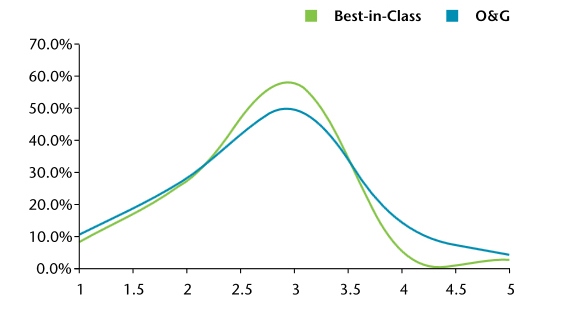Oil & Gas Industry: The Talent Conundrum
Pay Practices in Oil& Gas sector
The transforming talent landscape in the O&G sector has prompted organizations to develop and articulate a
compensation
strategy which is unique and differentiated, market competitive and aligned to the organization’s talent
objectives and
business goals. To capture the trends impacting the talent pool in this sector; we conducted an in-depth study on
the common
pay practices in the sector.
Leading O&G organizations are adopting the following approaches to implement an effective compensation
strategy:
Differentiating compensation philosophy for critical and technical
talent
The Indian O&G industry faces a unique challenge of cross-border mobility of talent. Due to
scarcity of
talent, most of the organizations adopt differing compensation philosophies between technical and support
functions.
The organizations have a different approach towards managing technical talent compensation by:
- Differentiation in compensation philosophy for technical talent: 38% of the
organizations
peg technical employees at 75th percentile of the market range
- Differing pay ranges for technical talent: 88% of the organizations have a pay
range which
is higher than that used for hiring of support/other functions
- Providing differing salary increments: 88% of the organizations have the
salary increment
budgets for technical talent higher than that of other functions
Organizations are therefore ensuring a competitive positioning aligned to business and talent
priorities.
Adopting the right pay mix Variable pay is used as a critical level for building a high performance work culture
by focusing
on driving employee behaviors to critical performance metrics. Variable pay for O&G operator organizations is
generally
higher than O&G service organizations. This figure is at 18% for operator
organizations and at 8% for service providers within the oil & gas sector across management cadres The oil
& gas
upstream industry is still not very mature in India and hence, the target variable pay for most operator
organizations is on
the lower side than average of best-in-class organizations.
Creating a strong performance management process –
‘Pay for performance’
Figure 1: Bell Curve Differentiation in Organizations

|